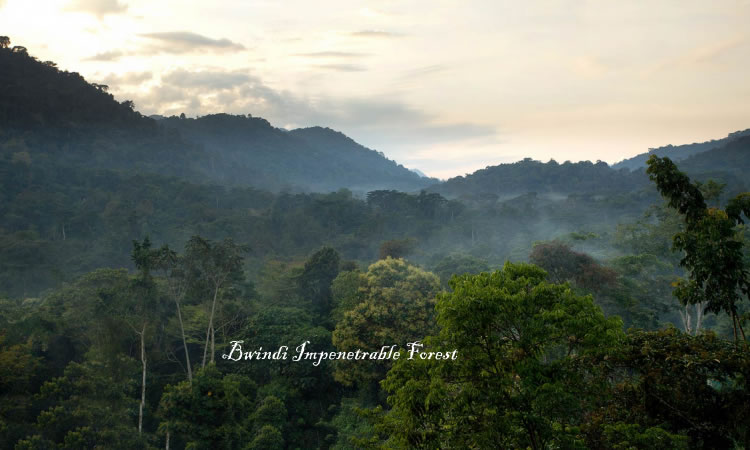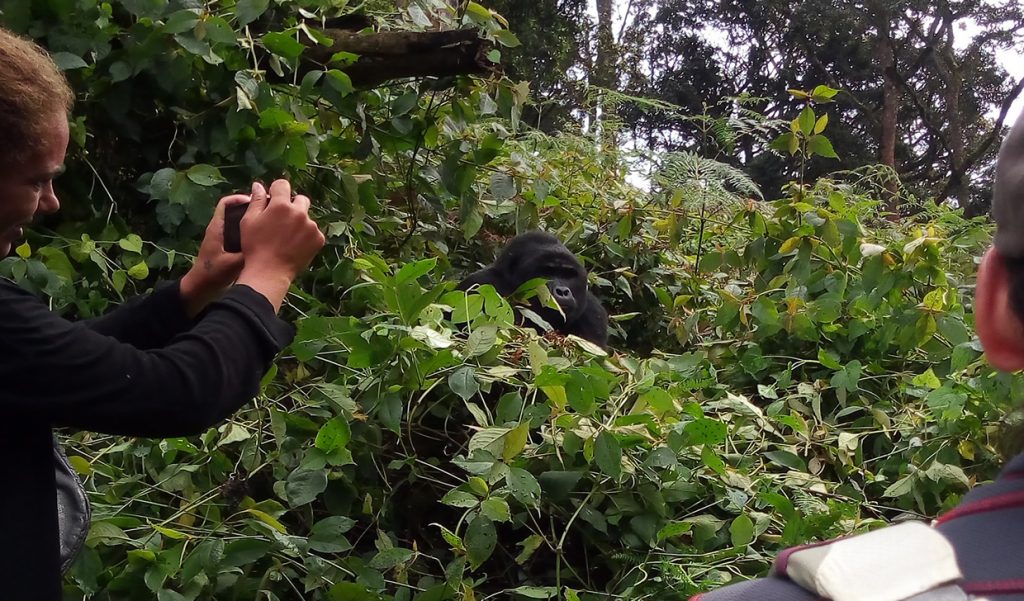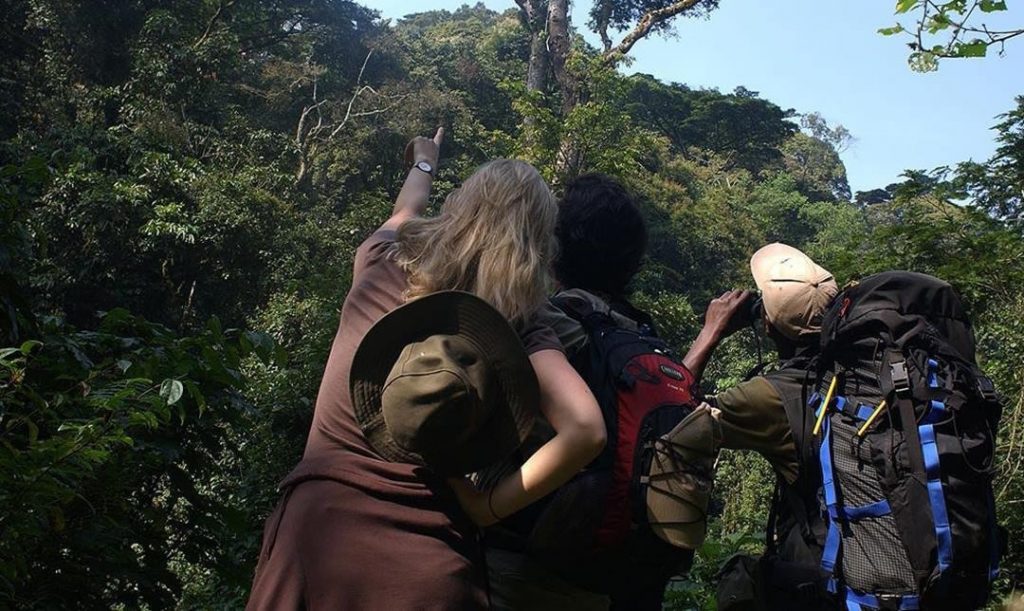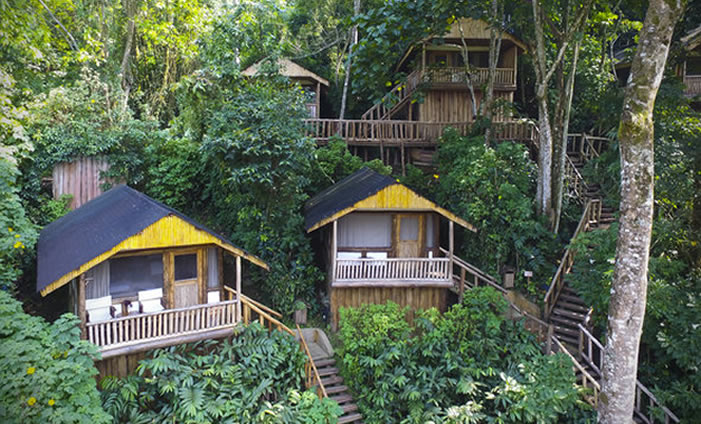Situated in the southwestern part of Uganda, Bwindi Impenetrable Forest National Park is remarkably one of the most spectacular and most sought after protected area in Africa and the world at large due to its incredible biodiversity. This park lies at the rim of the western rift valley covering an area of about 331 square kilometers and surrounded by Kisoro, Rukungiri and Kabale districts. It features among the very few protected areas in African continent that thrived throughout the last ice age and stands between altitude 1160 meters in Ishasha gorge and 2607 meters at Rwamunyonyi peak.

Bwindi Impenetrable National Park
Bwindi National Park receives an annual average temperature range of 7 to 20 degrees Celsius with its coldest period falling between June and July while heavy rains are experienced from March to May and from mid October to November. The park was established in 1992 mainly to offer refuge to over 400 individuals of endangered mountain gorillas that thrive within its thick jungles and represent approximately half of all the individuals that thrive in the world today.
This stunning conservation area is also proud of its unique mammal species that make up a total of around 120 including the 11 primate especially the black and white colobus monkeys, chimpanzees, blue monkeys, red tailed monkeys, olive baboons; 27 frog species, 30 elephants, and not to forget its over 360 bird-life, 23 of which are highly localized Albertine rift endemics and 14 of them can’t be spotted any part of the country (the notable birds include the African green broadbill, brown necked parrot, white tailed blue flycatcher and frazers eagle owl); 324 distinct species of trees with about 10 of them that you won’t get anywhere in Uganda (its afro montane forest features thick under storey of vines, shrubs, and ferns), 200 butterflies with 8 of them that are endemic to the Albertine rift and others. The park is surrounded by tribes like the Bakiga, the Bafumbira and a few marginalized Batwa pygmies.
What to do in Bwindi Impenetrable Forest National Park
- Mountain gorilla tracking

Gorilla Trekking in Bwindi Forest National Park
Mountain gorilla adventures feature among the main highlight for most safaris in Bwindi National Park. About 400 individuals of these rare primates thrive within the jungles of Bwindi and there are over 14 gorilla families that have been habituated for visitors to track each day. These include the Mubare family that features as the oldest group in the Bwindi and the first to be officially opened for visitation by tourists. Others include Habinyanja, Rushegura, Nkuringo, Nshongi, Kahungye, Busingye, Bitukura, Oruzogo, Bweza, Mishaya, Mukiza, Kyaguriro and others.
For lifetime experiences with these apes, there are 4 main tracking trails where the usual treks start from and they include Buhoma, Rushaga, Nkuringo and Ruhija sector. One habituated gorilla family is assigned to only 8 visitors to track each day and gorilla trekking permits cost $600 per visitor. Due to high demand, you are required to book for your permit in advance to avoid any kind of disappointment.
- Birding

Birders in Bwindi Forest National Park
With over 360 bird species, Bwindi Impenetrable Forest National Park is undeniably one of the birders paradises that shouldn’t miss out in your bucket list. While on your birding adventure, you will have a chance to spot out most of the bird species like the African green broadbill, yellow eyed black fly catcher, short tailed warbler, rusty faced woodland warbler, bar tailed trogon, wilcock’s honey guide, Gruer’s rush warbler, dusky crimson wing, kivu ground thrush, white tailed blue monarch and many more. For bird lovers, never forget to come with your camera and binocular.
- Nature walks
This is another most remarkable safari activity that shouldn’t miss out in your bucket list. Bwindi National Park features a number of hiking trails and each of them rewards visitors with rare tourist attractions. Visitors on nature walk along the park have opportunity to spot out most the primates, birds, butterflies, tree species and others. Hiking adventures in Bwindi take visitors through the River Munyanga walk, Rushura walk, the bamboo trail walk, Ivy River walk, Muzabajiro trail, Ruizi river trail and others.
- Cultural encounters
After your breathtaking mountain gorilla adventure, you can embark on cultural encounters in the nearest local communities to enjoy the most thrilling traditional and cultural performances that will be presented by women’s group especially by the Batwa pygmies.
Getting to Bwindi Impenetrable National Park
Bwindi National Park is accessible both by road and by air.
By road, visitors can spend about 9-10 hours while driving from Kampala city centre or Entebbe Airport. From Kampala to Kabale you will drive for a distance of about 414 kilometers approximately 6 t0 7 hours drive and then you drive for about 120 kilometers from Kabale to Buhoma park headquarters through Kanungu and Kanyantoroogo on murram road which takes you nearly 3 to 4 hours. Due to the kind of the roads, you will need a 4×4 vehicle.
From Kabale to Ruhija to Buhoma, you will drive for a distance of 95 kilometers approximately 3 to 4 hours drive.
By air, you can fly from Entebbe International Airport or Kajjansi Airstrip to Kisoro airfield or Kihihi airstrip and then connect by road up to the park. Aerolink Uganda has daily scheduled flights from Entebbe to Bwindi Gorilla Park.
Where to stay in Bwindi Impenetrable Forest National Park

Buhoma Lodge – Bwindi Forest
There are numerous lodging facilities for you to choose to spend a night while on safari in Bwindi Impenetrable Forest National Park. They include; Volcanoes Bwindi Camp, Chameleon Hill Lodge, Gorilla Forest Camp, Gorilla Resort, Mantana Camp, Kitandara Camp, Buhoma Community Rest Camp, Bakiga Lodge, Broadbill Forest camp and others.
Best Time to visit Bwindi Impenetrable National Park
Whereas Bwindi Impenetrable Forest National Park is considered to be an all year round safari destination, intending visitors can best explore it during the dry season that takes place from June to September and from December to February. However, you can also pay a visit during the wet season which usually starts from March to May and October to November.
To most visitors, Bwindi Gorilla Park features a mystical forest that offers refuge to a number of the most exceptional natural wonders ranging from primates, avian species, plants, trees, reptiles to mammals all of which are worth exploring while you are on a safari in Uganda.
